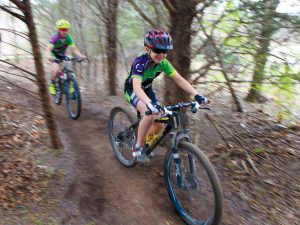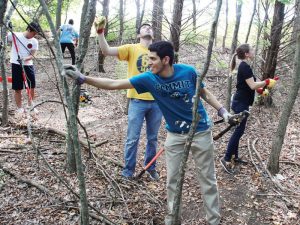Austin College charts a course to strengthen its impact
through a new center for community and regional development
Austin College has been a hub of activity in North Texas since the institution moved from Huntsville to Sherman in 1876. In the 138 years since, many connections have been built in the local community, but none more ambitious than the new Center for Community and Regional Development (CCRD) that will launch in Fall Term 2014.
The concept for community service was not new, but it evolved to a new level—during Austin College’s recent strategic planning process—from two very simple, but interrelated, questions:
(1) How does the community become an asset to the College and its students?
iiiiiThat is, how do the College and the community build relationships that provide students with exceptional learning opportunities?
(2) How can a liberal arts college and its students be an asset to the community?
iiiiiThat is, how do the College and the community build relationships that help make this a better place to live and work?

The CCRD will expand and deepen engagement of Austin College students, faculty, and staff in improving the quality of life in the Texoma region. Projects can be aligned with existing agencies, local governments, businesses, and residents to assist in planning and implementing a variety of community development projects.
Don Rodgers, associate professor of political science, will head the new center; Rodgers has been coordinating community-focused activities for the past few years, and said the new structure as a formal program will provide a stronger platform from which to engage the community.
“We are guided by a fundamental belief in the interdependence of a college and its community,” said Austin College President Marjorie Hass. “Immersion in civic life is critical for the intellectual development of Austin College students just as the College’s success contributes to the economic and cultural capital of our surrounding communities. We are excited to take this next step toward collaboration.”
The College’s new strategic plan, Adding Value to a Changing World: The Plan for Austin College 2015-2020, is available online.ii
Change Agents
Brought together under the banner of Austin College’s Center for Community and Regional Development, a suite of activities is already changing the face of North Texas. These activities are helping agencies, local governments, businesses, and citizens create solutions:
- Regional Bike (Active Transportation) Plan
- Downtown Art Projects for Sherman and Denison
- Educational Outreach to Local Schools
- Marketing Plan to Promote Texoma Tourism/ecotourism
- Department of Public Health Lake Water and West Nile Studies
- Social Entrepreneurship for Poverty Alleviation (SEPA) Program
- Home Hospice Program
- Library Programs
- Austin College/Southeastern Oklahoma State University Project on Native American Studies
- GIS Research Projects
- Chamber of Commerce/Leadership Sherman Programming
A primary function of the center will be to collect data relevant to regional economic, social, and educational initiatives. The formation will be made available to regional organizations; the center also will organize meetings, seminars, and symposia focused on data collection and analysis.
Those efforts have started quickly: in June, the College hosted the region’s first mental health conference, sponsored by the Texoma Health Foundation and celebrating the launch of the Meadows Mental Health Policy Institute for Texas.
A New Resource
In May, Austin College was approved as a new partner in The Foundation Center’s Funding Information Network. Dedicated computers in Abell Library will offer full access to the national database of grant-making organizations—another resource for the region Austin College calls “home.”

